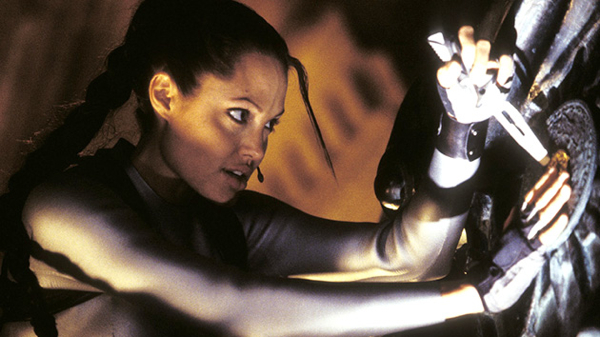Summer 2003 proved one strange, inconsequential thing at the box office: movies based on video games almost inevitably suck, while movies based on theme park rides might actually be pretty fun. In the second “Tomb Raider” entry (its full title, odd punctuation intact, is “Lara Croft Tomb Raider: The Cradle of Life”) Angelina Jolie reprises her role as the globetrotting thrill-seeker, but the result is as boring and predictable as the first film. Sadly, the bottom line is clear: it is more fun to play “Tomb Raider” on your computer than it is to watch it on the silver screen.
Does the plot even matter? Not really – but when your foggy memory recollects that in the first flick, Croft was chasing after the Illuminati in order to prevent the controlling of time itself, the notion of tracking down Pandora’s Box does not seem any more unreasonable. After all, the sequel’s opening set-piece – an underwater treasure hunt in a temple erected by Alexander the Great – ends with our heroine cutting her own arm in order to attract a nasty-looking shark, which she then punches in the snout and rides to the water’s surface. Reality itself is relative in Lara’s world.
Ripping off iconic adventurers like Indiana Jones and Allan Quatermain (who rather unfortunately turned up recently in the slumberous adaptation of “The League of Extraordinary Gentlemen”) does not seem that difficult – especially when employing someone as stunning and unusual as Jolie in the lead – but “The Cradle of Life” makes a perfect mess of it. Screenwriter Dean Georgaris elects to do nothing that might elevate his script above the lifeless sludge that preceded it, and as a result, Lara herself remains as brittle, aloof, and unknowable as she did the first time around.
Not even director Jan De Bont, taking the reins from Simon “Con Air” West, can jumpstart the lumbering, two-hour affair. Sure, the movie teems with action scenes, but each one feels as though it was written, performed, photographed, and edited in extreme slow motion. Lara Croft visits Greece, Asia, and Africa, but the gorgeous scenery remains utilized only as travelogue eye candy and never as a vibrant geography that demands to be treated as if it were integral to the plot or as important as the characters. Predictably, the regional ethnicities, from an “adorable” family on a sampan/houseboat to Djimon Hounsu’s stoic warrior, are treated with old-fashioned, colonial condescension.
Jolie, whose ravishing physicality makes her the ideal human being to play a computer-generated superhero, has built a solid reputation for playing unpredictable, edgy mavericks and should therefore be able to harness Croft’s inherent appeal (the intelligence, the purposefulness, the independence, the resiliency, etc.). Somehow, the rich and beautiful daredevil continues to elude the actor, despite her dedicated efforts. Jolie should not be blamed, however, for the sad fact that the “Tomb Raider” movies are anything but entertaining. The trick lies inside the rambling narratives of the video games, and more to the point, how to turn those escapades into compelling big screen tales. Maybe next time.
